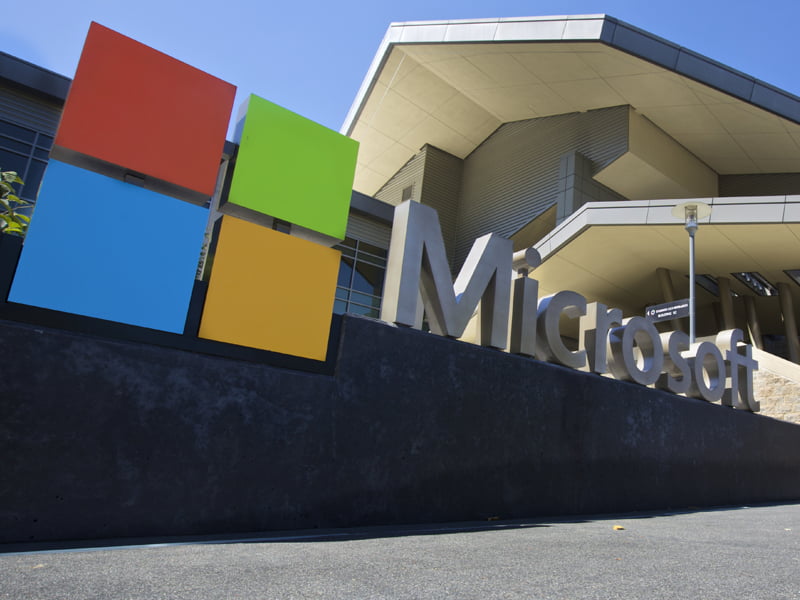Microsoft is considering using small nuclear reactors and microreactors to power its data centres as the company looks to shore up clean energy supply in response to growing demand for AI services, an Australia-based spokesperson has explained.
At the end of September, Microsoft published a job ad on its corporate careers web page for a principal program manager for nuclear technology to lead a global small modular rector (SMR) and microreactor strategy.
Specifically, the advertisment sought a program manager in the US who would lead the “technical assessment for the integration of SMR and microreactors to power the data centres that the Microsoft Cloud and AI reside on”.
When InnovationAus.com asked a Microsoft Australia about the prospect of the company going nuclear, a spokesperson said that “AI will be a powerful tool for advancing sustainability solutions, but we need a plentiful clean energy supply globally to power this new technology which has increased consumption demands”.

The demand for ever greater processing capacity has also spurred investment in “research to measure the energy use and carbon impact of AI, while working on ways to make large systems more efficient, in both training and application”.
In 2022, global data centre electricity consumption was estimated by the International Energy Agency to be 240TWh to 340TWh, about 1.5 per cent of all electricity used. According to the International Atomic Energy Agency, an SMR has a power capacity of up to 300MW.
Gartner senior principal analyst Autumn Stanish told InnovationAus.com that in the decade to 2030, consumption is expected to grow by almost 700 to 800 per cent, reaching about 6.4 per cent of global electricity consumption.
This is even before accounting for the increased demand spurred by AI. When the estimate was calculated last year, Ms Stanish said that Australia had the fastest growth in data centre installation in the Asia Pacific.
CDC Data Centres, which is the largest provider of data centre services supporting the federal government, currently operates 268MW worth data centre capacity across Australia and New Zealand, with an additional 265MW under construction and a pipeline of a further 517MW out to 2028.
It is looking to accelerate its development plans in response to the growing demand for computer power being driven by AI. The total data centre capacity currently operational in Australia is not known.
Despite the explorations of a nuclear option by Microsoft however, Ms Stanish said that such a strategy is probably many years out, with the “fruition and the benefits” even further away. There are currently only two SMR in use across the world, and neither are operating at a commercial scale,although several countries including the UK, US, Canada, and France are building them.
Given the time and investment needed to scale the technology, she added that “only somebody like Microsoft could potentially do that. And they’re probably going to do it at a very, very small scale”.
“I am more on the optimistic side that once we can get a few running for a short period of time, it will take the fear away from all of this…but I think that it’s going to take at least five years for that to even be a possibility,” Ms Stanish said.
Ms Stanish also noted that there continue to be regulatory hurdles against the technology across the world. This includes Australia, where nuclear reactors for energy production have been banned since 1998.
However, the Liberal and National parties have in recent times advocated for its use, with shadow climate change ande energy minister Ted O’Brien, even calling for the development of full-scale reactors as recently as last Friday.
Mr O’Brien told the Australian Nuclear Association Conference “there is no credible pathway for Australia to reach net-zero without zero-emissions, nuclear energy. No nuclear, no net-zero. It’s that clear cut”.
“And so, as we are looking at, how do we include, how do we consider, zero-emissions, nuclear energy. We are looking at everything, micro reactors, small modular reactors, and large reactors. We are looking off the grid, on the grid. We are looking at its capacity to provide heat, its capacity to provide electricity. And we’re doing so on an evidence-based level.”
The federal government has opposed to lifting the ban on nuclear energy, arguing that it is too costly when compared to renewable resources.
According to the CSIRO and Australian Energy Market Operator’s latest GenCost report, SMRs are forecast to cost $350/MW, more than three times the cost of wind and solar. However, this is based on limited data due to the low number of operational SMRs.
Climate Change and Energy minister Chris Bowen has previously declared that “nuclear is the wrong fit for Australia. It’s not a flexible source like gas, you can turn up and down. Nuclear has not been that. Certainly not cheap. And it’s not on the timeframe”.







